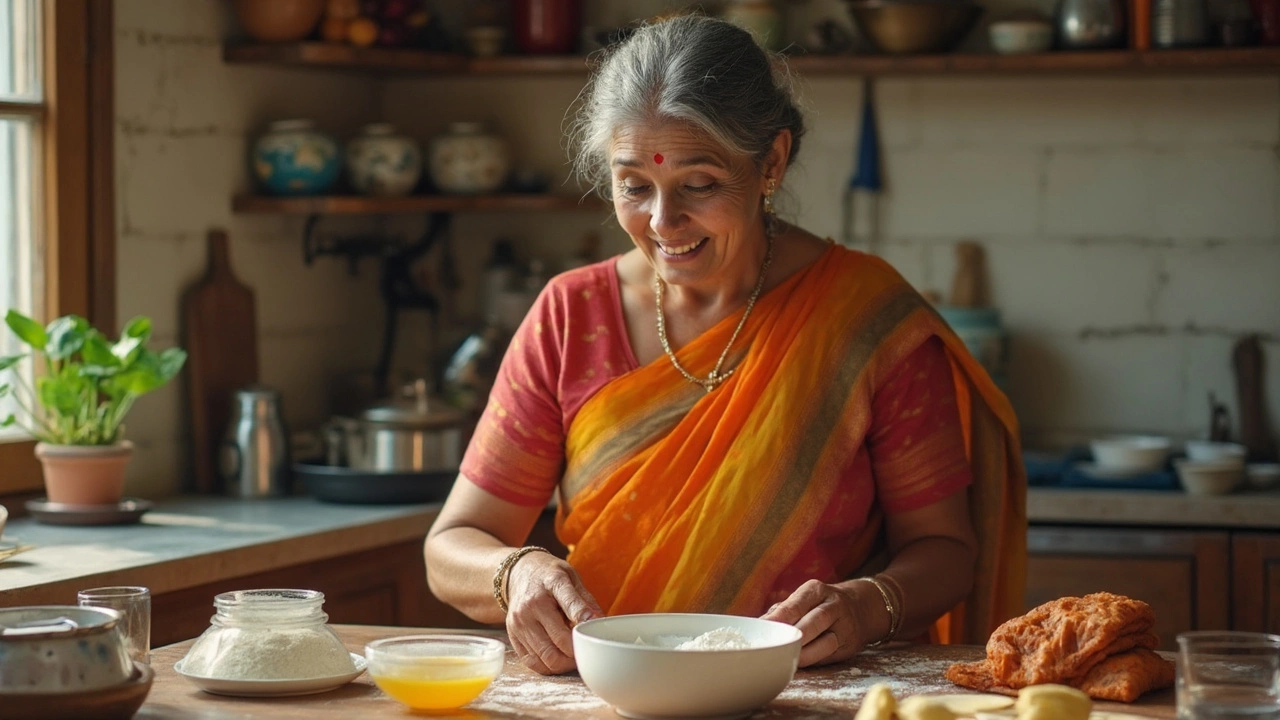Baking Powder: The Secret Behind Fluffy Indian Breads and More
When working with baking powder, a dry chemical leavening agent that releases carbon dioxide when combined with moisture and heat. Also known as powdered leavener, it enables quick, even rise in a wide range of recipes. In Indian kitchens, this tiny white powder often decides whether a roti puffs up or stays flat.
Another common leavener is baking soda, pure sodium bicarbonate that needs an acid to trigger carbon dioxide production. Unlike baking powder, which already carries its own acid, baking soda only works when you add something sour like lemon juice or yogurt. This difference matters because using the wrong one can make your dough taste metallic or stay dense. Knowing when to swap them is a simple way to avoid a flat result.
Why It Matters in Indian Cooking
Take roti, a whole‑wheat flatbread that should puff up with steam. Adding a pinch of baking powder to the dough creates tiny air pockets during cooking, which translates to a soft, puffy roti that separates easily. The trick is to blend the powder evenly into the flour before adding water; otherwise the carbon dioxide escapes before the pan gets hot. This subtle tweak turns a basic chapati into a restaurant‑style treat.
Similarly, dosa batter, a fermented rice‑lentil mixture used for South Indian crepes benefits from a dash of baking powder when you’re short on time. The powder speeds up the leavening process, giving the batter a lighter texture and a crispier edge without a long overnight ferment. Just a quarter teaspoon per cup of batter is enough to kick‑start the rise.
Beyond breads, baking powder shines in sweets like fluffy cakes, airy biscuits, and quick tiffin snacks. It works hand‑in‑hand with eggs, butter, and milk to trap gases, creating a tender crumb that melts in the mouth. The rule of thumb is one teaspoon for every cup of flour; too much leads to a soapy taste, too little leaves the product dense. Mastering this balance unlocks a whole new world of light, enjoyable desserts.
All these examples show that leavening agents are more than kitchen chemistry—they’re the bridge between a rough dough and a satisfied bite. Below you’ll find a curated set of articles that dive deeper into using baking powder, comparing it with baking soda, and troubleshooting common problems in Indian recipes. Whether you’re perfecting roti, experimenting with dosa, or baking a quick cake, the tips ahead will help you get the most out of this humble powder.

Does Roti Need Baking Powder? The Real Deal for Softer Breads
Wondering if you should add baking powder to roti dough? This article breaks down if baking powder is a must for soft rotis, how it changes texture, and what most home cooks actually do. Find practical tips, some science behind old-school methods, and easy hacks for perfecting your rotis every time. Plus, learn which tweaks make a difference and what’s just a time-waster in the kitchen.